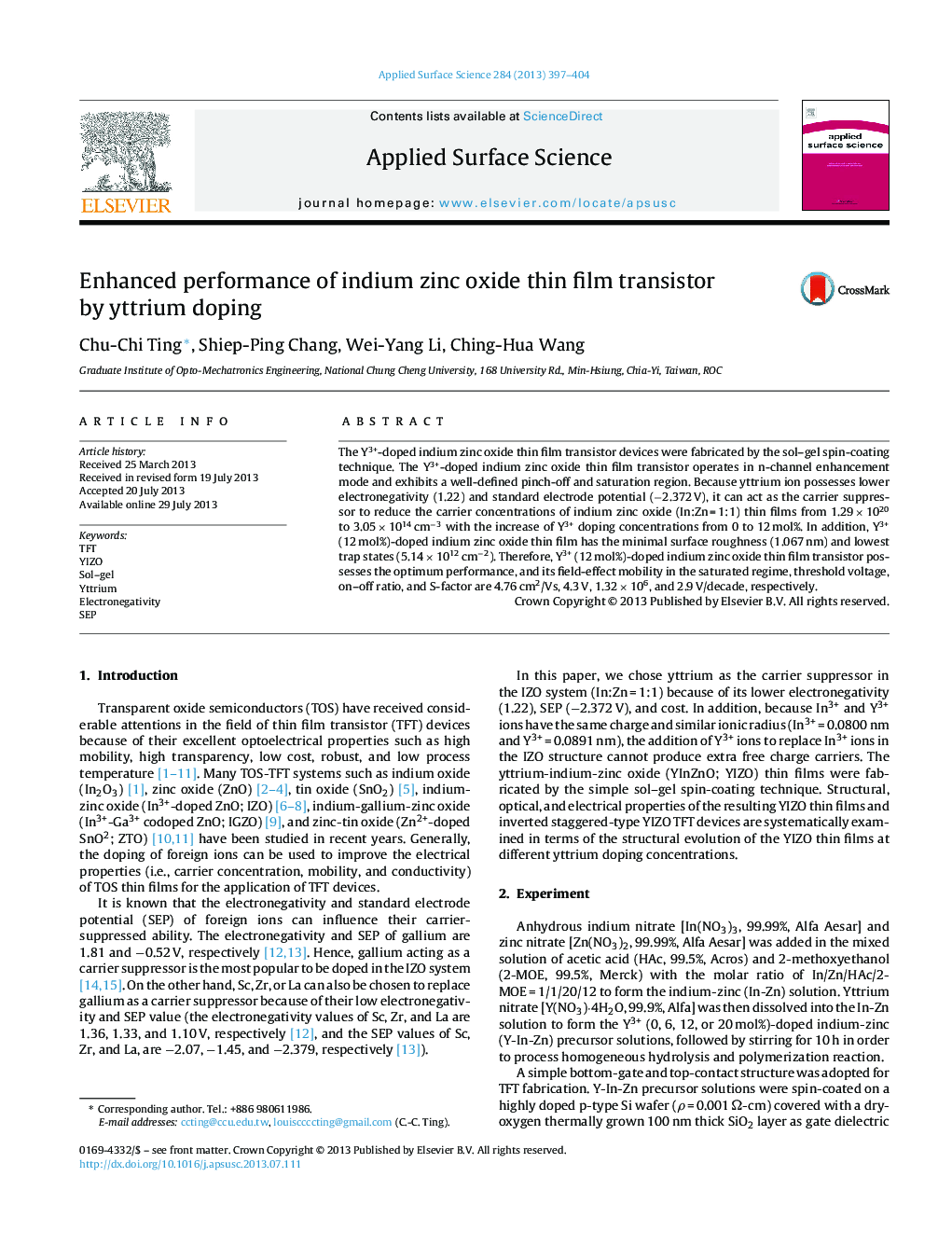| Article ID | Journal | Published Year | Pages | File Type |
|---|---|---|---|---|
| 5352622 | Applied Surface Science | 2013 | 8 Pages |
Abstract
The Y3+-doped indium zinc oxide thin film transistor devices were fabricated by the sol-gel spin-coating technique. The Y3+-doped indium zinc oxide thin film transistor operates in n-channel enhancement mode and exhibits a well-defined pinch-off and saturation region. Because yttrium ion possesses lower electronegativity (1.22) and standard electrode potential (â2.372 V), it can act as the carrier suppressor to reduce the carrier concentrations of indium zinc oxide (In:Zn = 1:1) thin films from 1.29 Ã 1020 to 3.05 Ã 1014 cmâ3 with the increase of Y3+ doping concentrations from 0 to 12 mol%. In addition, Y3+ (12 mol%)-doped indium zinc oxide thin film has the minimal surface roughness (1.067 nm) and lowest trap states (5.14 Ã 1012 cmâ2). Therefore, Y3+ (12 mol%)-doped indium zinc oxide thin film transistor possesses the optimum performance, and its field-effect mobility in the saturated regime, threshold voltage, on-off ratio, and S-factor are 4.76 cm2/Vs, 4.3 V, 1.32 Ã 106, and 2.9 V/decade, respectively.
Related Topics
Physical Sciences and Engineering
Chemistry
Physical and Theoretical Chemistry
Authors
Chu-Chi Ting, Shiep-Ping Chang, Wei-Yang Li, Ching-Hua Wang,
